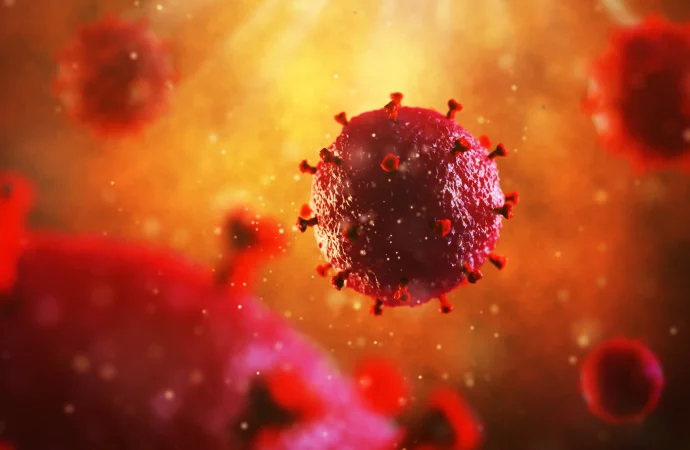Introduction: Insulinoma, though infrequent, play a significant role in disrupting the delicate balance of blood sugar levels. This article aims to provide a detailed exploration of the causes, symptoms, diagnostic methods, and treatment options associated with insulinomas. Causes and Risk Factors: The precise origin of insulinomas remains elusive, and the identified risk factors are minimal.
Introduction:
Insulinoma, though infrequent, play a significant role in disrupting the delicate balance of blood sugar levels. This article aims to provide a detailed exploration of the causes, symptoms, diagnostic methods, and treatment options associated with insulinomas.
Causes and Risk Factors:
The precise origin of insulinomas remains elusive, and the identified risk factors are minimal. However, a correlation between certain genetic diseases such as Multiple Endocrine Neoplasia type 1 and an increased likelihood of insulinoma development has been established. This section delves into the complexities of associated syndromes and their impact on pancreatic health.

Image by: yandex.com
Symptoms in Detail:
Insulinomas can manifest through a variety of symptoms, each affecting the individual’s overall well-being. Here’s a closer look at the key indicators:
- Confusion: Cognitive impairment may arise due to the impact of excess insulin on the brain.
- Sweating: Profuse sweating is a common symptom associated with low blood sugar levels.
- Weakness: Insulinomas can lead to a general sense of weakness and fatigue.
- Rapid Heartbeat: The cardiovascular system may be affected, resulting in an increased heart rate.
Severe cases of hypoglycemia, induced by insulinomas, can lead to unconsciousness and even coma. Recognizing these symptoms promptly is crucial for timely intervention.

Image by: www.onlymyhealth.com
Diagnosis Process:
The diagnosis of insulinomas presents unique challenges, often leading to a delay in identification. On average, there is about a three-year gap between the onset of symptoms and an accurate diagnosis. In this section, we explore the various diagnostic methods, including fasting tests, blood sampling, and advanced imaging techniques such as CT scans, MRIs, and ultrasound studies. Additionally, we discuss the significance of postprandial blood sugar and insulin tests in specific cases.

Image by: yendex.com
Treatment Options:
While surgical removal is a common approach for non-cancerous insulinomas, this section delves into the nuances of the procedure. Laparoscopy, involving small incisions and specialized instruments, is discussed as a viable surgical method. Non-surgical alternatives, catering to those unsuitable for surgery, are also explored. Pre-surgery care, involving intravenous solutions to prevent hypoglycemia, is outlined to provide a comprehensive understanding of the treatment landscape.

Image by: yendex.com
Comparative Table: Surgery vs. Non-Surgical Treatments
| Aspect | Surgery | Non-Surgical Treatments |
|---|---|---|
| Primary Approach | Tumor removal from pancreas | Medication, dietary adjustments |
| Procedure Type | Laparoscopic or traditional | Medication management, lifestyle |
| Cure Rate | High | Symptomatic relief, not curative |
| Complications | Bleeding, infection, pain | Medication side effects, dietary |
Living with Insulinomas:
For individuals diagnosed with insulinomas, this section provides insights into post-surgery life. The majority of insulinomas are non-cancerous, and surgical removal often resolves the condition. Potential complications, such as pancreatic fistulas, are discussed, along with the reassuring fact that symptoms typically do not recur.
Prevention and Awareness:
As of now, there are no known preventive measures for insulinomas. However, creating awareness about the condition is crucial. This section encourages considering genetic testing, especially if there is a family history indicating an increased risk of insulinoma development.
When to Seek Medical Attention:
Recognizing the symptoms of low blood sugar is pivotal for managing insulinomas effectively. Individuals experiencing frequent symptoms such as sweating, confusion, and rapid heartbeat, especially after meals or physical activity, Treatment for other Health Problems are advised to consult healthcare providers promptly for timely intervention.

Image by: www. money owl.com
Conclusion:
Insulinomas, though rare, demand attention due to their potential impact on blood sugar regulation. Understanding the causes, symptoms, and available treatments empowers individuals to manage this unique health challenge effectively. This comprehensive guide serves as a valuable resource for those seeking in-depth information on insulinomas and their intricacies.
















